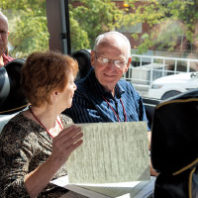
Bringing up babies
If only babies came with instruction manuals.
A simple set of operating guidelines might help new parents navigate the necessity of naps, manage mealtimes, and teach a toddler to share.
While there are thousands of books and guides and websites, the situation is far from simple. Well-meaning childhood experts, doctors, and parents have blanketed early childhood with good, bad, and often conflicting advice. “The problem is, no one has time to read all that’s out there,” says Tracy Cutchlow ’97, a journalist, book editor, and (fairly) new mother.
Raising a baby can be confusing, confounding, and complicated, Cutchlow admits one afternoon over coffee in Seattle. … » More …








